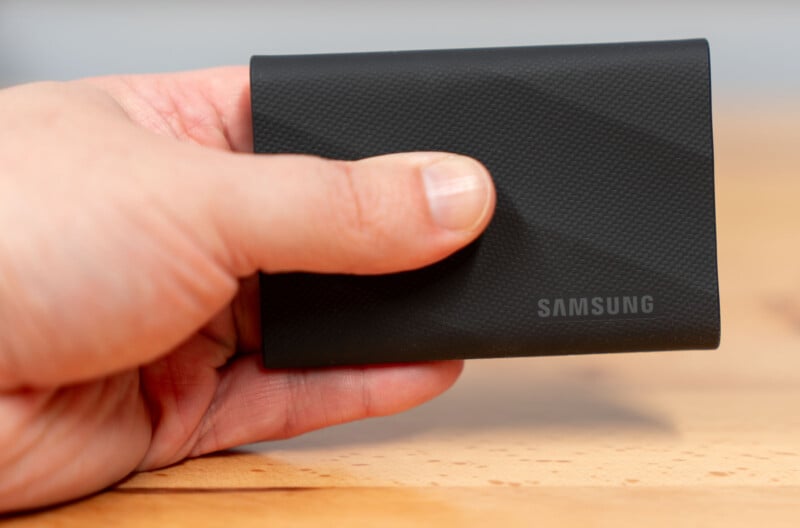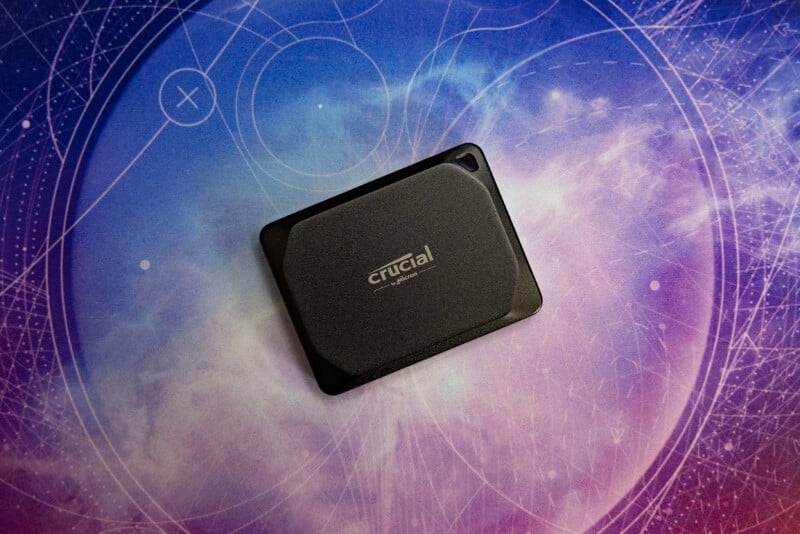Manufacturers Need to Stop Making New USB 3.2 2×2 SSDs: It Isn’t Helpful
![]()
A couple of companies have released new SSD products in the last few months and they carry one commonality: USB 3.2 2×2. They shouldn’t, because all it does is overstate the performance a vast majority of users will ever see.
On paper, USB 3.2 Gen 2×2, sounds like a great idea (outside of the overly complicated name): it’s faster and backward compatible with USB 3.2, so even if you don’t have the new format, it will play nice with basically every new computer out there right now.
“USB 3.2 Gen 2×2 is a multi-lane operation for new hosts and devices, allowing for up to two lanes of 10 Gbps operation to realize a theoretical 20Gbps data transfer rate,” Kingston explains.
Earlier this year, Crucial entered the portable SSD space with its X10 and aimed its sights squarely at Samsung, promising faster speeds, lower operating temperatures, and a smaller footprint. Samsung didn’t wait long to respond, however, and just announced the T9.
“The Crucial X10 Pro SSD uses USB 3.2 Gen 2×2 technology to deliver 2,100 MB/s read speeds and 2,000 MB/s write speeds,” I wrote in my launch story for the SSD last July.
“The T9 promises up to 2,000 MB/s transfer speeds when using its USB 3.2 Gen 2×2 interface, nearly double the theoretical max speed of the T7,” Jeremy Gray explained when Samsung announced the new SSD earlier this month.

The key data point there is the requirement of USB 3.2 Gen 2×2. While yes, it is supported by some modern computers, it’s not common. For photographers, many of whom are using Apple computers, it’s even rarer. Apple only put the ability to take advantage of this format on one computer — in one USB-C port — from before the transition to its own silicon. Instead, Apple decided to jump up and support USB 4.0, even though it was far from being mainstream, since it would be a lot better and far more future-proof.
Seeing USB 3.2 Gen 2×2 on new SSDs is really disappointing for a number of reasons. For one, it’s a format that has already been left behind and is currently being replaced by USB 4.0 — ProGrade just launched a new card reader that works on the specification and it’s great. The other problem is that it’s, unfortunately, misleading to a consumer.
While technically true, these new SSDs from Samsung and Crucial can get up to above 2,000 MB/s speeds, the likelihood of a buyer actually experiencing those speeds is pretty low. In truth, they’ll see less than half that: the Samsung tested at 905 MB/s write speeds and the Crucial clocked in at 845.1 MB/s. Don’t get me wrong, that’s very fast for a non-Thunderbolt drive, but that’s nowhere near where either brand advertises.
So why did Samsung and Crucial go with a format that almost no computer supports and no new computer is getting? Well, because they can get access to the parts.

“The chips for USB 4.0 were not readily available until now. Even now, they are very limited. We started working on this awhile ago so that we could be early to the market and we secured supply for launch and beyond. 2×2 is 20Gbps — half of USB 4.0 — so some may have introduced 2×2 as an interim step until USB 4.0 became available,” Mark Lewis, Vice President Marketing and Co-founder of ProGrade Digital, tells me.
“Since Apple has been shipping USB 4.0 devices for some time now, it was natural for us to bypass 2×2 and wait to launch USB 4.0 since we think that will be the long-term future.”
Even if they are obtainable, USB 4.0 chips aren’t easy to get in large orders if your name isn’t Apple. So, in order to sell faster SSDs, manufacturers are going with a format they actually have access to even if it’s not realistically faster for users.
Is it fast enough for most workflows? Sure. Is it fast enough that most won’t notice? Definitely. But that’s not the point.
I advocate that these companies just wait until the right parts are available before launching a product that will be obsolete very soon — it’s arguably obsolete now. I know that’s not reasonable for a company all the time, but it would be nice if customers could just trust the numbers they see on a box rather than have to know the complex nature of USB formats and names in order to get what they’re promised and not feel misled.
This story is part of PetaPixel’s weekly newsletter Clipped Highlights.
What is Clipped Highlights?
Clipped Highlights is a free, curated, weekly newsletter that will be sent out every Wednesday morning and will focus on a few of the most important stories of the previous week and explain why they deserve your attention. This newsletter is different from our daily news brief in that it provides unique insights that can only be found in Clipped Highlights.
In addition to unique takes on the biggest stories in photography, art, and technology, Clipped Highlights will also serve to feature at least one photo series or art project that we think is worth your time to check out. So often in the technology and imaging space we focus on the how and not the what. We think that it’s just as important, if not more so, to look at the art created by photographers around the world as it is to celebrate the new technologies that makes that artwork possible.
If this kind of content sounds like something you’re interested in, we encourage you to subscribe to the free Clipped Highlights newsletter today. You can read this week’s edition right here, no subscription necessary, to make sure it’s something you want in your inbox.
We’ll also make sure to share each edition of Clipped Highlights here on PetaPixel so if you aren’t a fan of email, you won’t be forced to miss out on the weekly newsletter.